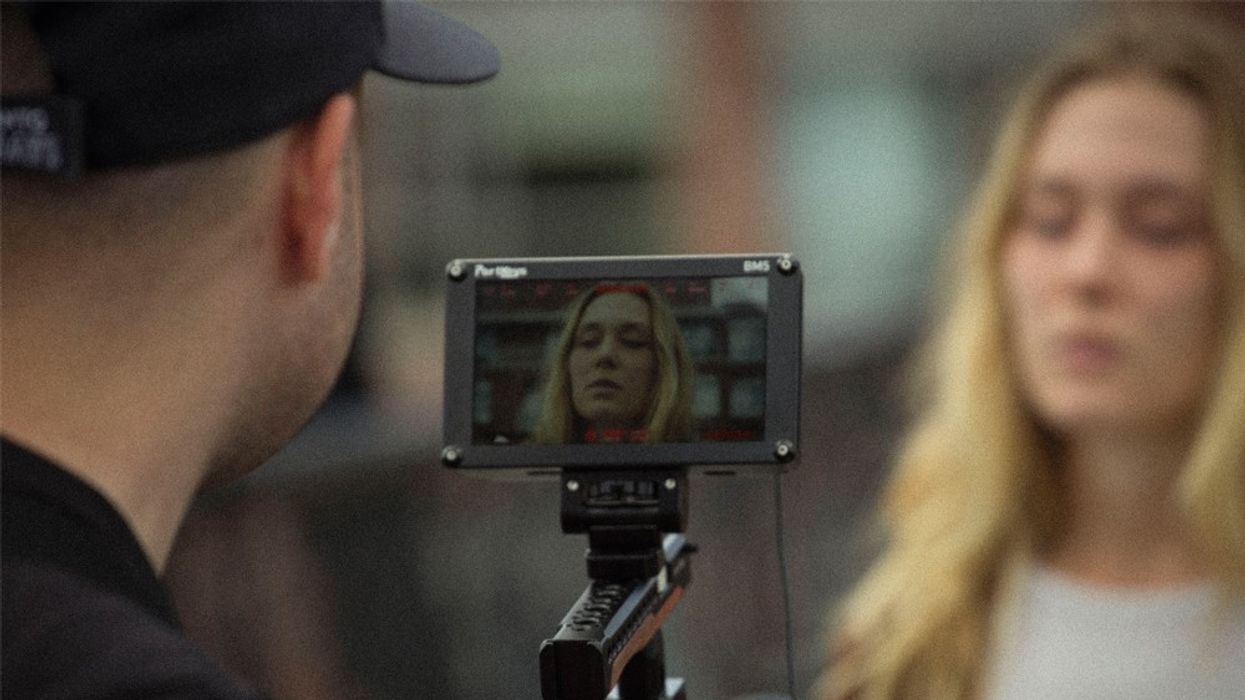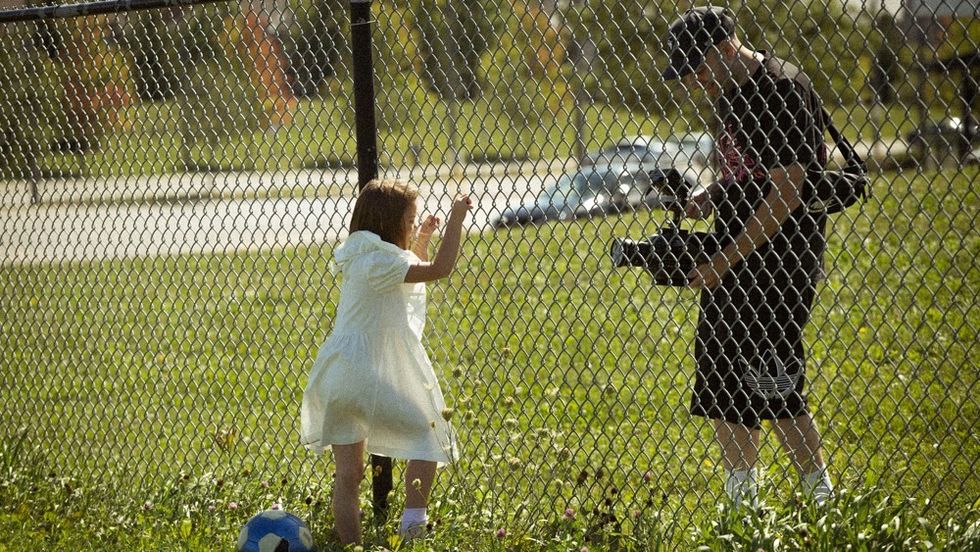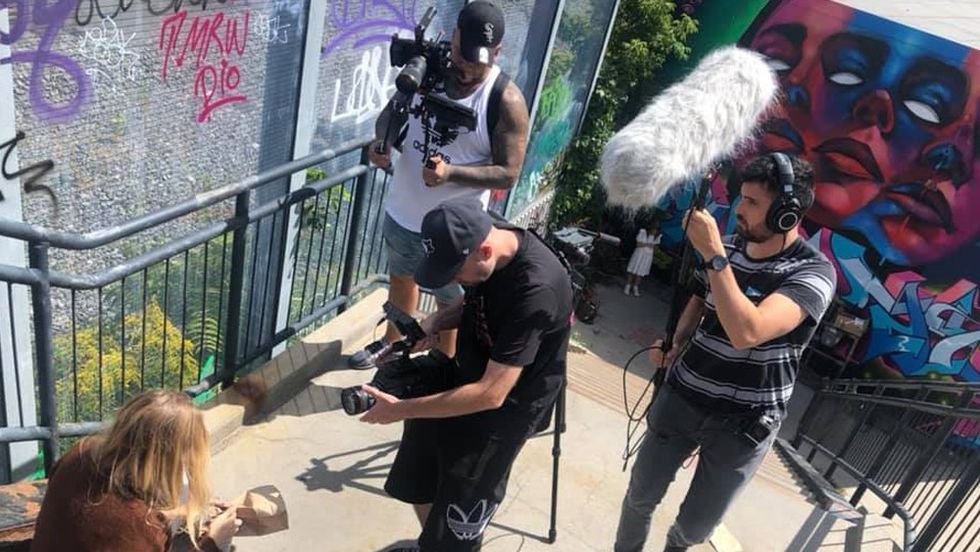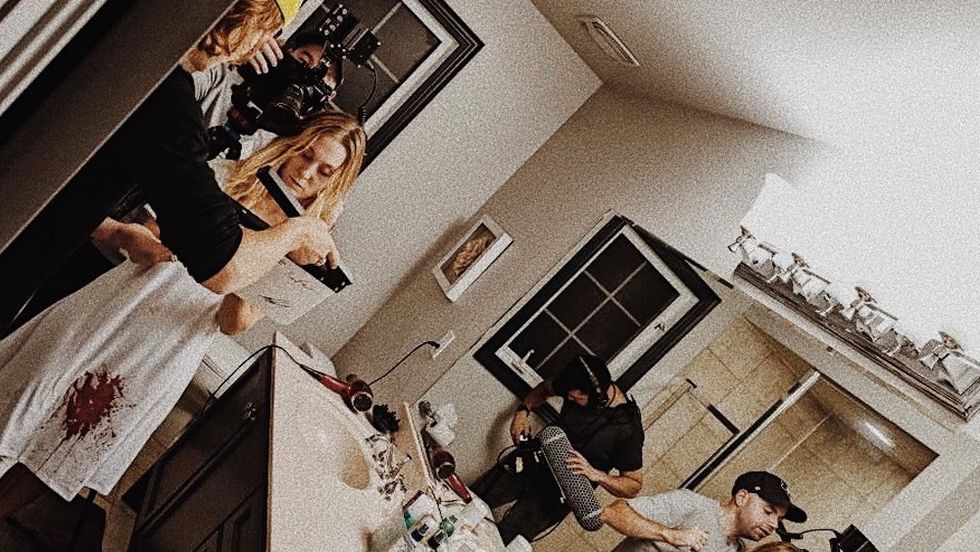Shooting a Movie During a COVID Lockdown Isn't Impossible. We Did It.
It's important to stay creative in uncertain times.

My name is Leo Rossikov. Along with my good friend Shawn Vasquez, we go by Fatty Soprano and Shutterr, a director duo from Toronto, Canada.
We started our filmmaking journey making music videos and always tried giving them a nostalgic look and treatment like our favorite 90s films. After years of working with artists and labels, we’ve always felt limited by the music video format and wanted to explore the narrative world.
Martin Scorsese’s Taxi Driver is one of our favorite films and what inspired us to become filmmakers. We’ve always wanted to tackle a dark subject, a story that can make you sympathize with the characters.
When the pandemic hit, it gave us that opportunity, and we ended up shooting our short, Seabreeze.
Developing the story
To get started on the script, we studied different screenwriting structures, watched YouTube tutorials, and the Aaron Sorkin Masterclass. We also joined multiple Facebook film writers groups to network and find collaborators that were experienced enough to help us produce the project.
Thanks to those Facebook film groups, we met Aidan Grossman. He was working on a screenplay about a woman going through childhood flashbacks right before dying by the beach. The three of us decided to collaborate on the script.
Some of the best advice we’ve heard was to "write what you know." A good friend recently went through a very dark depression due to a miscarriage that changed her forever. We thought it would make for a moving story. We combined her story with Grossman’s beach idea, and the screenplay for Seabreeze was born.
The shoot
For the look, our biggest inspirations were Darren Aronofsky’s Requiem for a Dream and Danny Boyle’s Trainspotting.

We wanted our day exteriors to have a 35mm feel with soft highlights. Since buying 35mm film was out of reach, we ended up shooting the entire project stacking two diffusion filters and using bounce boards as part of our lighting setup. The filters consisted of a Tiffen Black Pro-Mist 1/4 and a Tiffen Soft/FX 1/2 stacked in front of the lens. This created the soft highlights we were looking for.
We paired the filter setup with a Blackmagic Pocket Cinema Camera 4K using a Metabones Ultra Speed Booster for low-light scenes and a URSA Mini Pro 4K for day scenes for its dynamic range and built-in ND filters.
The production was self-financed, and coming from a background of mostly directing music videos, this was only our second attempt at creating a short narrative. As we were just about to get going, Toronto locked down the entire city, which made us rethink our production strategy.
Filming during the pandemic
We originally planned to book a production studio to build a set with more controlled lighting, however, that plan had to be scrapped and replaced by mostly outdoors locations (street corners, empty streets, the beach, etc).

The biggest challenge during production was the public gathering restrictions in the city. We had to keep the crew under 10 people due to Toronto’s new laws. We ended up modifying the screenplay and reducing the cast. This allowed us to have a boom operator, sound recordist, and a producer on set. But we also had to wear multiple hats, where I was the DP and Shutterr took the role of first AC and gaffer.
Post-production
Post is where the project really took on its visual style. We took it upon ourselves to edit the project in Final Cut Pro X and graded DaVinci Resolve with the help of fantastic film emulation tools like FilmConvert and Dehancer. Grading the Blackmagic footage allowed us to closely match a 35mm look.
We also ended up cropping the aspect ratio to 4:3 even though we shot in 16:9. We thought it made it more personal and a little more focused on the characters.
Xavier Dolan’s film Mommy was another big inspiration for the tighter frame, however, 1:1 was a bit too much for the aesthetic we wanted.

We’ve faced another challenge with sound. The microphone ended up picking up unwanted frequencies, especially at the busy beaches. So before you end up doing multiple takes and leaving a location, review at least the first shot before shooting the rest of the scene.
That said, the actors did an amazing job dubbing their lines. Our sound recordist Xavier Bolduc was a huge help with the ADR process. He played the original lines recorded for the actresses multiple times and asked them to record those lines again mimicking the performance.
This entire process taught us how to embrace guerrilla-style filmmaking without compromising the story. But one of the most important lessons we learned, even after a carefully planned shoot, is that there’s no such thing as enough B-roll.
We’ve executed all the scenes based on our shot list and storyboards, however, additional B-roll could have facilitated the editing process and helped the story pace. We decided to dedicate an additional day just for B-roll, and this was one of the best decisions we ever made.
What's Next? More stories of filmmaking during lockdown!
COVID has certainly made production more difficult, but there are plenty of stories of filmmakers finding creative solutions to overcome those obstacles, including shooting while on lockdown, nailing a festival premiere, and thriving with a remote production.
Check out more work from Fatty Soprano and Shutterr.











